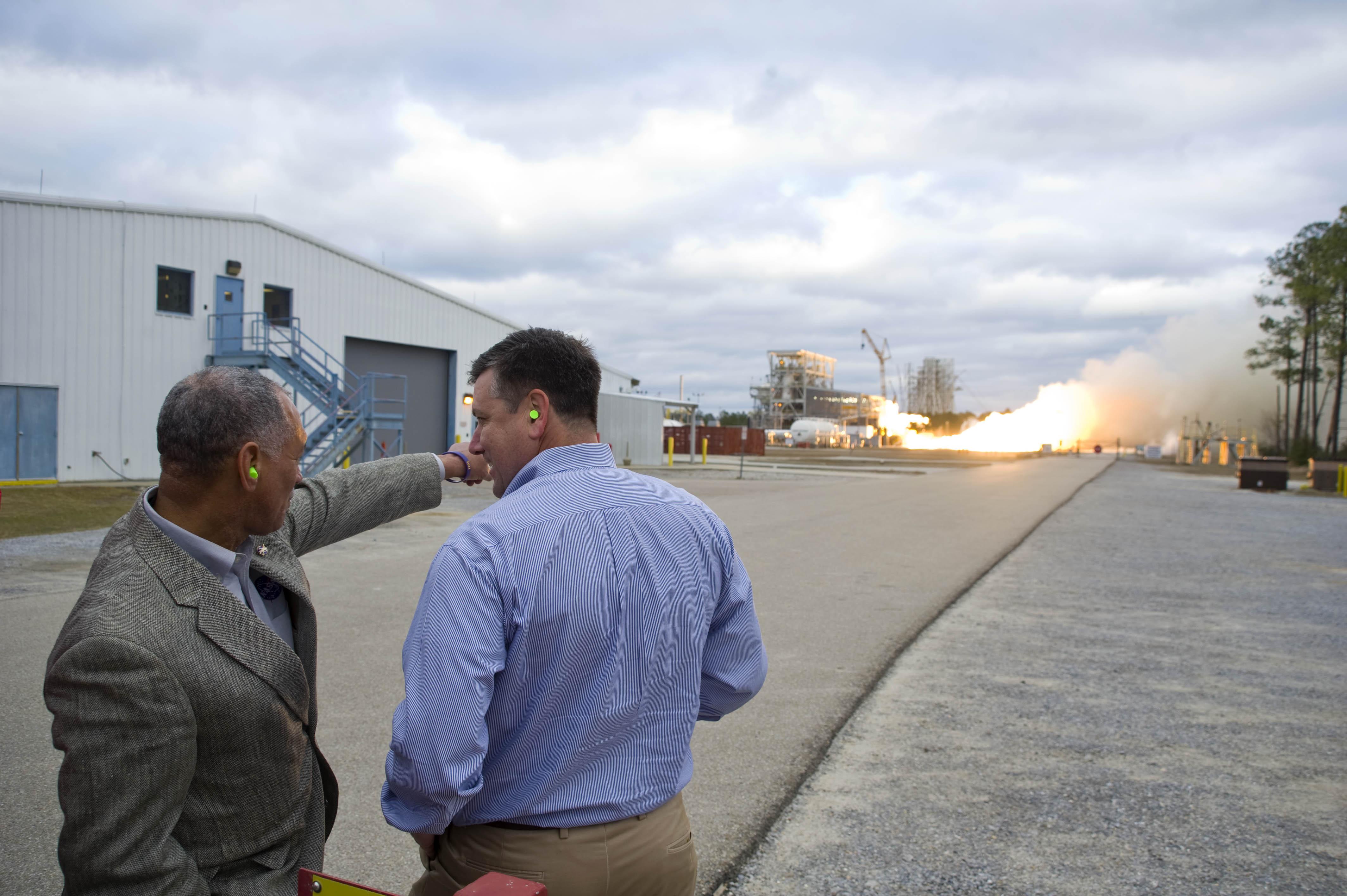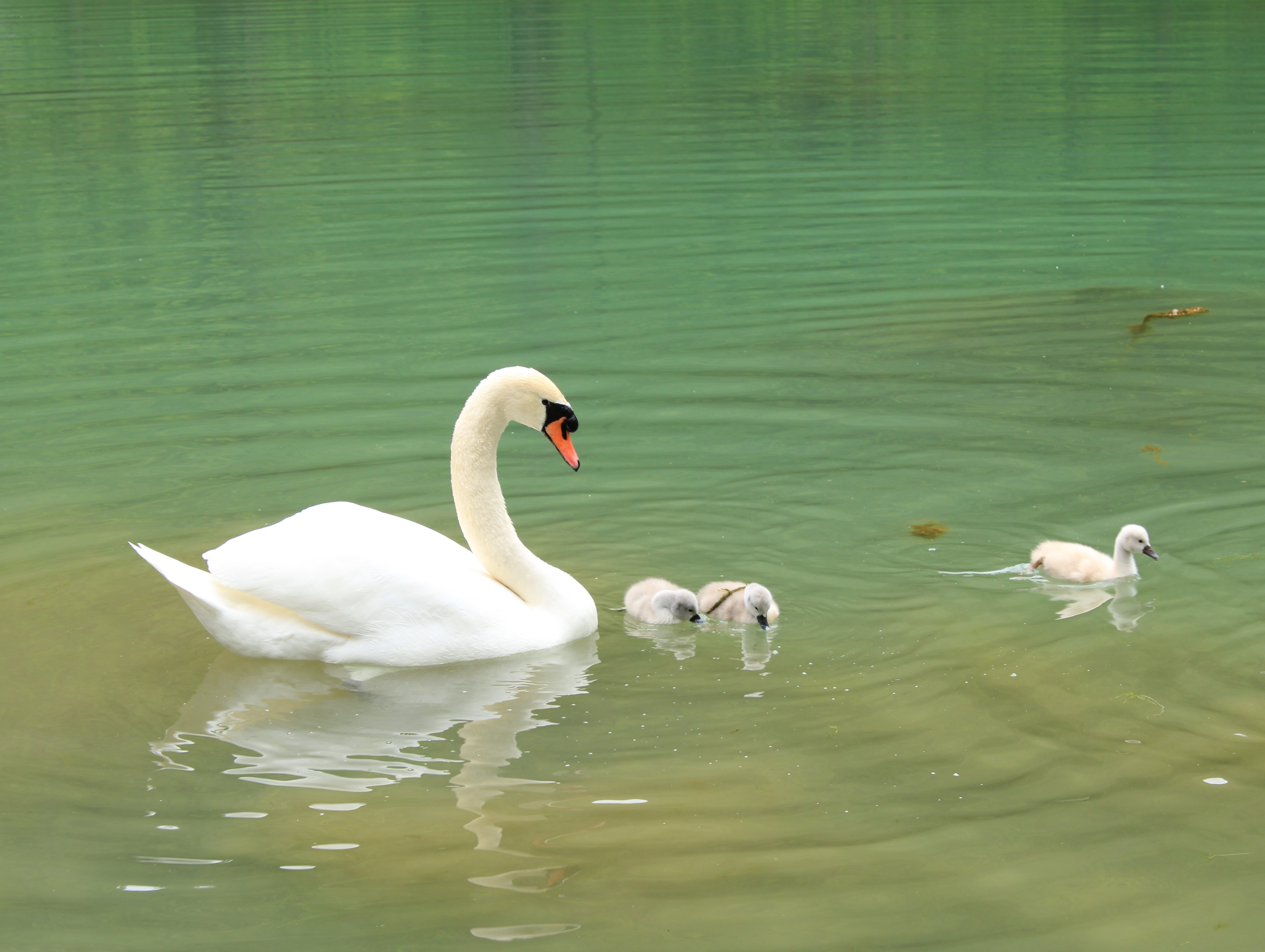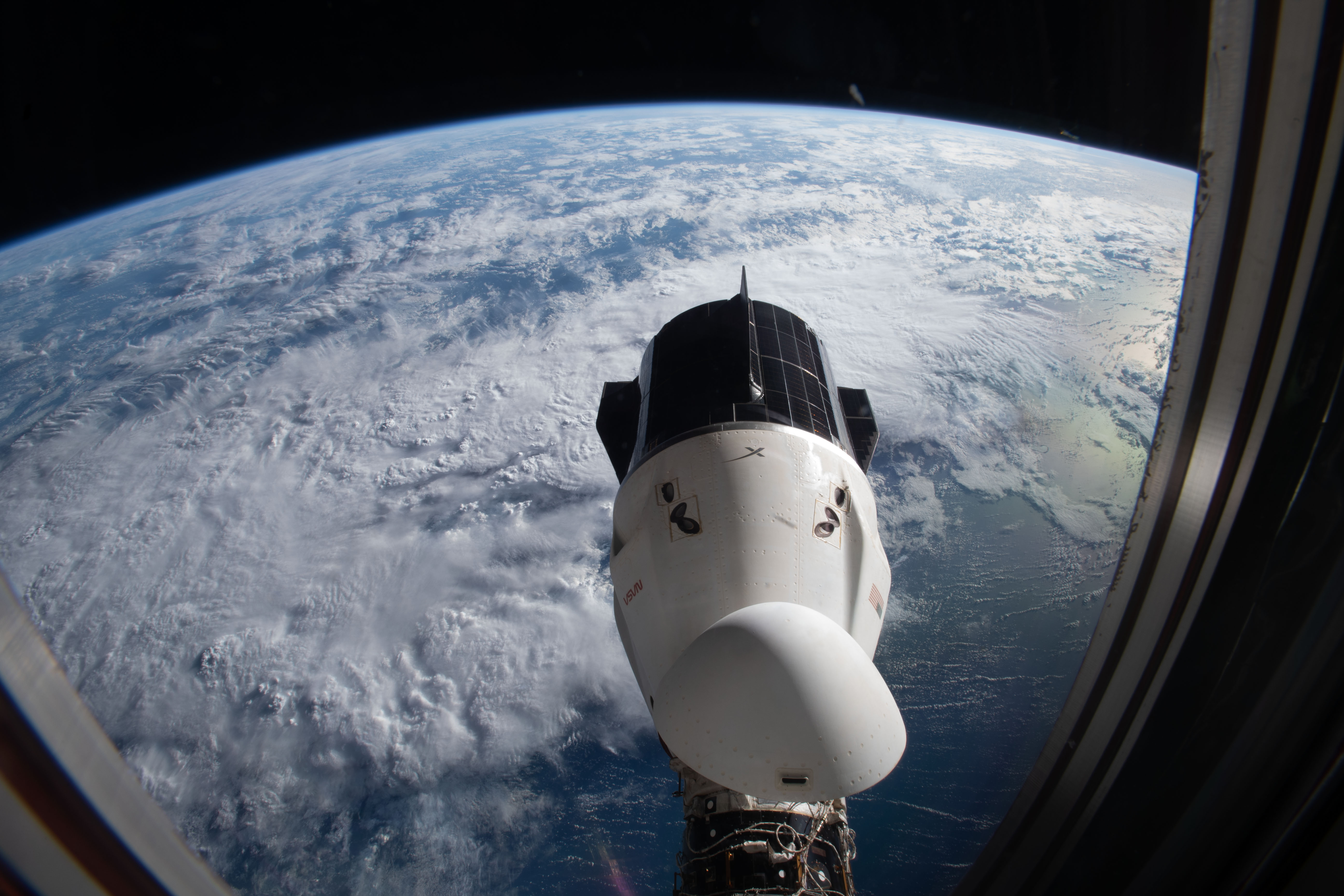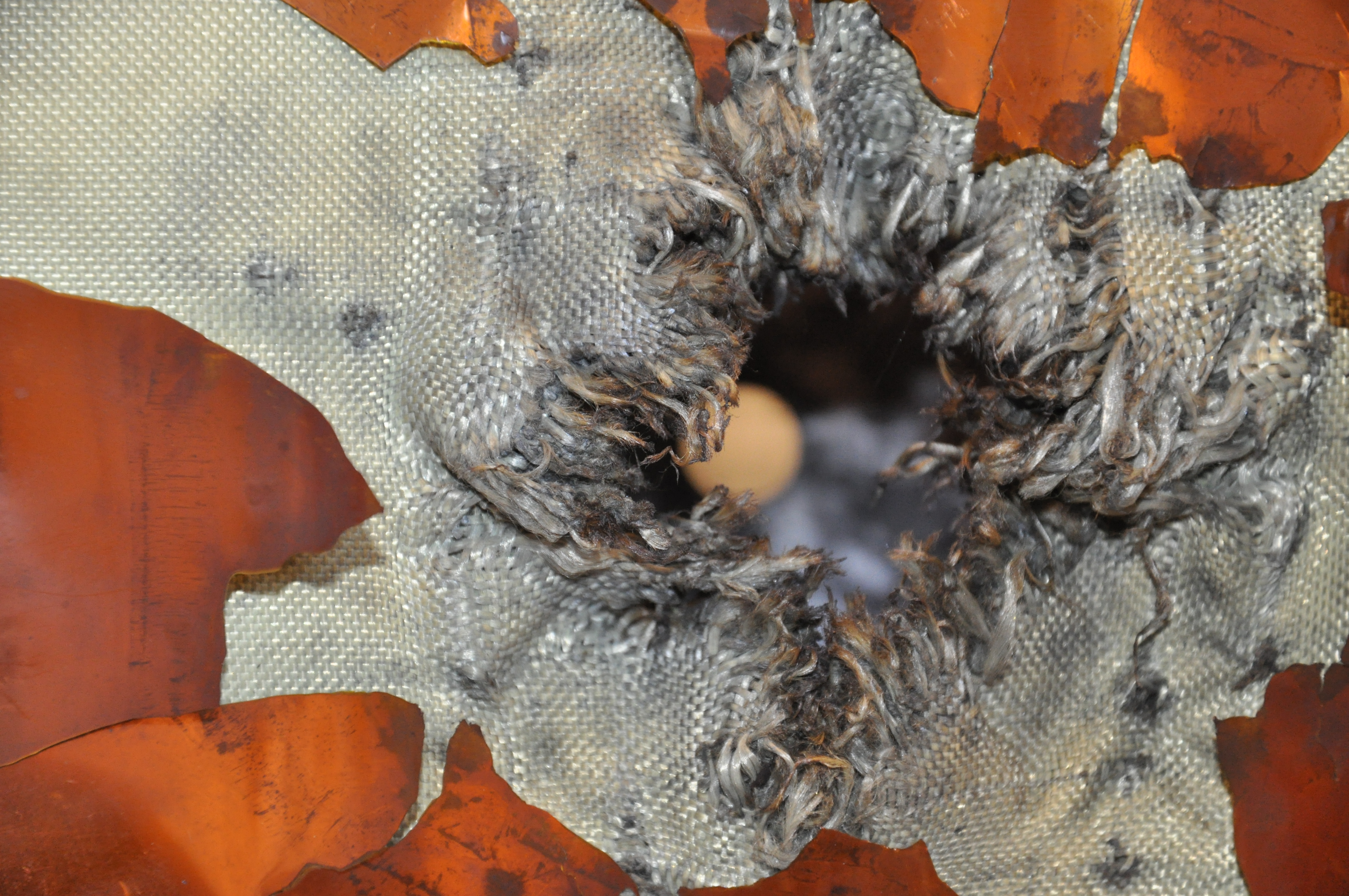|
Cygnus (spacecraft)
Cygnus is an Expendable launch system, expendable American Uncrewed spacecraft, automated cargo spacecraft designed for International Space Station (ISS) resupply missions. It was initially developed by Orbital Sciences Corporation with financial support from NASA under the Commercial Orbital Transportation Services (COTS) program. To create Cygnus, Orbital paired a pressurized cargo module, largely based on the Multi-Purpose Logistics Module, built by Thales Alenia Space and previously used by the Space Shuttle for ISS resupply, with a service module based on Orbital's GEOStar, a satellite bus. After a successful demonstration flight in 2013, Orbital was chosen to receive a Commercial Resupply Services (CRS) contract. A larger Enhanced Cygnus was introduced in 2015. Orbital Sciences merged into Orbital ATK in 2015; Northrop Grumman purchased Orbital ATK in 2018 and has continued to operate Cygnus missions. A further enlarged Mission B Cygnus is expected to be introduced in 2025. ... [...More Info...] [...Related Items...] OR: [Wikipedia] [Google] [Baidu] |
International Space Station
The International Space Station (ISS) is a large space station that was Assembly of the International Space Station, assembled and is maintained in low Earth orbit by a collaboration of five space agencies and their contractors: NASA (United States), Roscosmos (Russia), European Space Agency, ESA (Europe), JAXA (Japan), and Canadian Space Agency, CSA (Canada). As the largest space station ever constructed, it primarily serves as a platform for conducting scientific experiments in microgravity and studying the space environment. The station is divided into two main sections: the Russian Orbital Segment (ROS), developed by Roscosmos, and the US Orbital Segment (USOS), built by NASA, ESA, JAXA, and CSA. A striking feature of the ISS is the Integrated Truss Structure, which connect the station’s vast system of solar panels and Spacecraft thermal control, radiators to its pressurized modules. These modules support diverse functions, including scientific research, crew habitation, ... [...More Info...] [...Related Items...] OR: [Wikipedia] [Google] [Baidu] |
Satellite Bus
A satellite bus (or spacecraft bus) is the main body and structural component of a satellite or spacecraft, in which the payload and all scientific instruments are held. Bus-derived satellites are less customized than specially-produced satellites, but have specific equipment added to meet customer requirements, for example with specialized sensors or transponders, in order to achieve a specific mission. They are commonly used for geosynchronous satellites, particularly communications satellites, but are most commonly used in spacecraft which occupy low Earth orbit missions. Examples Some satellite bus examples include: * Boeing DS&S 702 * Lockheed Martin Space Systems A2100 * Moog Inc. SL-OMV, Meteor, Meteorite * * INVAP ARSAT-3K * Airbus D&S Eurostar * ISRO's I-1K, I-2K, I-3K, I-4K, I-6K, and Indian Mini Satellite bus * NASA Ames MCSB * SSL 1300 * family * Orbital ATK Star Bus family, inc GEOStar * Mitsubishi Electric DS2000 * Spacecraft bus of the Jam ... [...More Info...] [...Related Items...] OR: [Wikipedia] [Google] [Baidu] |
NK-33
The NK-33 ( GRAU index: 14D15) and its vacuum-optimized variant, the NK-43, were rocket engines developed in the late 1960s and early 1970s by the Kuznetsov Design Bureau for the Soviet space program's ill-fated N1 Moon rocket. The NK-33 is among the most powerful LOX/RP-1 powered rocket engines ever built, noted for its high specific impulse and low structural mass. The NK-33 was an improved version of the earlier NK-15 engine, which powered the original N1 launch vehicle. Key upgrades included simplified pneumatic and hydraulic systems, advanced controls, enhanced turbopumps, an improved combustion chamber, fewer interfaces employing pyrotechnic devices, and modified interfaces to facilitate replacement of parts during refurbishment. Each N1F rocket would have utilized 30 NK-33 engines on its first stage and eight NK-43 engines on its second stage. Consequently, when the Soviet Union aborted its lunar landing effort in 1974, dozens already manufactured engines were left in ... [...More Info...] [...Related Items...] OR: [Wikipedia] [Google] [Baidu] |
Cygnus (constellation)
Cygnus is a northern constellation on the plane of the Milky Way, deriving its name from the Latinisation of names, Latinized Greek language, Greek word for swan. Cygnus is one of the most recognizable constellations of the northern summer and autumn, and it features a prominent asterism (astronomy), asterism known as the Northern Cross (asterism), Northern Cross (in contrast to the Southern Cross). Cygnus was among the 48 constellations listed by the 2nd century astronomer Ptolemy, and it remains one of the 88 modern constellations. Cygnus contains Deneb (ذنب, translit. ''ḏanab,'' tail)one of the brightest stars in the night sky and the most distant first-magnitude staras its "tail star" and one corner of the Summer Triangle the constellation forming an east pointing Altitude (triangle), altitude of the triangle. It also has some notable X-ray sources and the giant stellar association of Cygnus OB2. One of the stars of this association, NML Cygni, is one of the List of larg ... [...More Info...] [...Related Items...] OR: [Wikipedia] [Google] [Baidu] |
Swan
Swans are birds of the genus ''Cygnus'' within the family Anatidae. The swans' closest relatives include the goose, geese and ducks. Swans are grouped with the closely related geese in the subfamily Anserinae where they form the tribe (biology), tribe Cygnini. Sometimes, they are considered a distinct subfamily, Cygninae. They are the largest Anseriformes, waterfowl and are often among the largest Bird flight, flighted birds in their range. There are six living and many extinct species of swan; in addition, there is a species known as the coscoroba swan which is no longer considered one of the true swans. Swans usually mate for life, although separation sometimes occurs, particularly following nesting failure, and if a mate dies, the remaining swan will take up with another. The number of bird egg, eggs in each :wikt:clutch, clutch ranges from three to eight. Taxonomy and terminology The genus ''Cygnus'' was introduced in 1764 by the French naturalist François Alexandre Pier ... [...More Info...] [...Related Items...] OR: [Wikipedia] [Google] [Baidu] |
Greek Language
Greek (, ; , ) is an Indo-European languages, Indo-European language, constituting an independent Hellenic languages, Hellenic branch within the Indo-European language family. It is native to Greece, Cyprus, Italy (in Calabria and Salento), southern Albania, and other regions of the Balkans, Caucasus, the Black Sea coast, Asia Minor, and the Eastern Mediterranean. It has the list of languages by first written accounts, longest documented history of any Indo-European language, spanning at least 3,400 years of written records. Its writing system is the Greek alphabet, which has been used for approximately 2,800 years; previously, Greek was recorded in writing systems such as Linear B and the Cypriot syllabary. The Greek language holds a very important place in the history of the Western world. Beginning with the epics of Homer, ancient Greek literature includes many works of lasting importance in the European canon. Greek is also the language in which many of the foundational texts ... [...More Info...] [...Related Items...] OR: [Wikipedia] [Google] [Baidu] |
SpaceX Dragon
Dragon is a family of spacecraft developed and produced by American private space transportation company SpaceX. The first variant, later named SpaceX Dragon 1, Dragon 1, flew 23 cargo missions to the International Space Station (ISS) between 2010 and 2020 before retiring. Design of this version, not designed to carry astronauts, was funded by NASA with $396 million awarded through the Commercial Orbital Transportation Services program and contracted to ferry cargo under the Commercial Resupply Services (CRS) program. An improved version, the SpaceX Dragon 2, Dragon 2, was introduced in 2019 and has both crewed and cargo versions. The first un-crewed flight test (Crew Dragon Demo-1, Demo-1) took place in March 2019, followed by a crewed flight test (Crew Dragon Demo-2, Demo-2) in May 2020. Since those flight tests, the Crew Dragon has become one of the primary spacecraft ferrying crew to and from the ISS. While the Cargo Dragon continues to carry cargo under the CRS program. S ... [...More Info...] [...Related Items...] OR: [Wikipedia] [Google] [Baidu] |
H-II Transfer Vehicle
The H-II Transfer Vehicle (HTV), also called , is an Expendable launch system, expendable Japanese Cargo spacecraft, automated cargo spacecraft designed for International Space Station (ISS) resupply missions, particularly the Kibo (ISS module), ''Kibō'' Japanese Experiment Module (JEM). Development of the spacecraft began in the early 1990s and the HTV's first mission, HTV-1, was launched on 10September 2009 on an H-IIB launch vehicle. The name ''Kounotori'' was chosen because "a white stork carries an image of conveying an important thing (a baby, happiness, and other joyful things), therefore, it precisely expresses the HTV's mission to transport essential materials to the ISS". The HTV is crucial for ISS resupply, especially after the retirement of the Space Shuttle, as it's the only vehicle capable of transporting large International Standard Payload Racks (ISPR) and disposing of old ones within the ISS's US Orbital Segment. The final HTV mission, Kounotori 9, was laun ... [...More Info...] [...Related Items...] OR: [Wikipedia] [Google] [Baidu] |
Automated Transfer Vehicle
The Automated Transfer Vehicle, originally Ariane Transfer Vehicle or ATV, was an expendable automated cargo spacecraft, cargo spacecraft developed by the European Space Agency (ESA), used for space cargo transport in 2008–2015. The ATV design was launched to orbit five times, exclusively by the Ariane 5 heavy-lift launch vehicle. It effectively was a larger European counterpart to the Russian Progress (spacecraft), Progress cargo spacecraft for carrying upmass to a single destination—the International Space Station (ISS)—but with three times the capacity. History The five ATVs were named after important European figures in science and engineering: ''Jules Verne ATV, Jules Verne'', ''Johannes Kepler ATV, Johannes Kepler'', ''Edoardo Amaldi ATV, Edoardo Amaldi'', ''Albert Einstein ATV, Albert Einstein'', and ''Georges Lemaître ATV, Georges Lemaître''. Following several delays to the program, the first of these was launched in March 2008. These ATVs performed supply mis ... [...More Info...] [...Related Items...] OR: [Wikipedia] [Google] [Baidu] |
Progress (spacecraft)
The Progress () is a Russian expendable cargo spacecraft. Originally developed for the Soviet space program and derived from the crewed Soyuz (spacecraft), Soyuz spacecraft, Progress has been instrumental in maintaining long-duration space missions by providing consumables like food, water, and air, as well as maintenance equipment. Since its maiden flight in 1978, Progress has supported various space stations, including Salyut 6, Salyut 7, and Mir, and remains a key resupply vehicle for the International Space Station (ISS). Each Progress mission delivers thousands of kilograms of supplies in its pressurized module. It also carries water, fuel, and gases to replenish the station's resources and sustain its onboard atmosphere. Beyond resupply duties, a docked Progress can maneuver or reboost the station, countering atmospheric drag and maintaining its operational altitude. When a Progress spacecraft nears the end of its design life, it is loaded with waste, undocked, and deorbit ... [...More Info...] [...Related Items...] OR: [Wikipedia] [Google] [Baidu] |
Uncrewed Spaceflights To The International Space Station
Uncrewed spaceflights to the International Space Station (ISS) are made primarily to deliver cargo, however several Russian modules have also docked to the outpost following uncrewed launches. Resupply missions typically use the Russian Progress spacecraft, European Automated Transfer Vehicles, Japanese Kounotori vehicles, and the American Dragon and Cygnus spacecraft. The primary docking system for Progress spacecraft is the automated Kurs system, with the manual TORU system as a backup. ATVs also use Kurs, however they are not equipped with TORU. The other spacecraft — the Japanese HTV, the SpaceX Dragon (under CRS phase 1) and the Northrop Grumman Cygnus — rendezvous with the station before being grappled using Canadarm2 and berthed at the nadir port of the Harmony or Unity module for one to two months. Progress, Cygnus and ATV can remain docked for up to six months. Under CRS phase 2, Cargo Dragon docks autonomously at IDA-2 or 3 as the case may be. As of March 2025, ... [...More Info...] [...Related Items...] OR: [Wikipedia] [Google] [Baidu] |
SpaceX
Space Exploration Technologies Corp., commonly referred to as SpaceX, is an America, American space technology company headquartered at the SpaceX Starbase, Starbase development site in Starbase, Texas. Since its founding in 2002, the company has made numerous advancements in rocket propulsion, reusable launch vehicles, human spaceflight and satellite constellation technology. , SpaceX is the world's dominant space launch provider, its launch cadence eclipsing all others, including private competitors and national programs like the Chinese space program. SpaceX, NASA, and the United States Armed Forces work closely together by means of Government contractor, governmental contracts. SpaceX was founded by Elon Musk in 2002 with a vision of decreasing the costs of space launches, paving the way to SpaceX ambition of colonizing Mars, a sustainable colony on Mars. In 2008, Falcon 1 successfully launched into orbit after three failed launch attempts. The company then pivoted towar ... [...More Info...] [...Related Items...] OR: [Wikipedia] [Google] [Baidu] |










